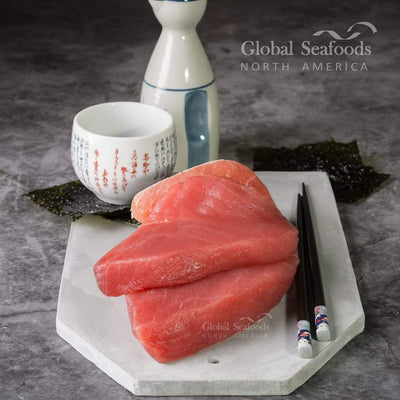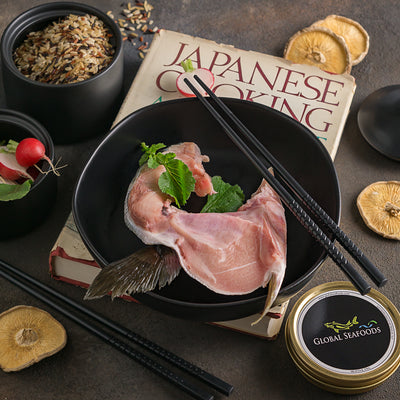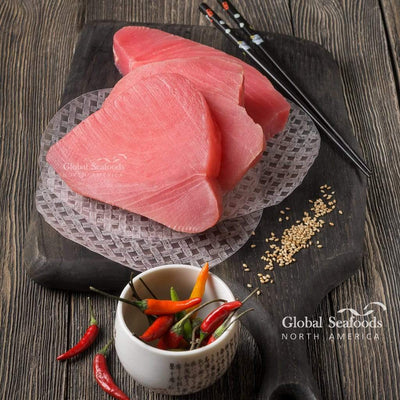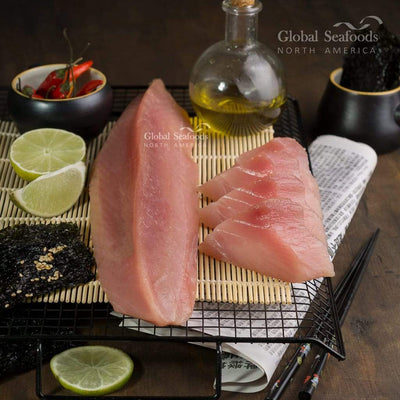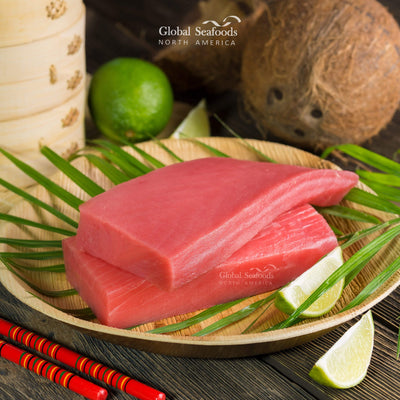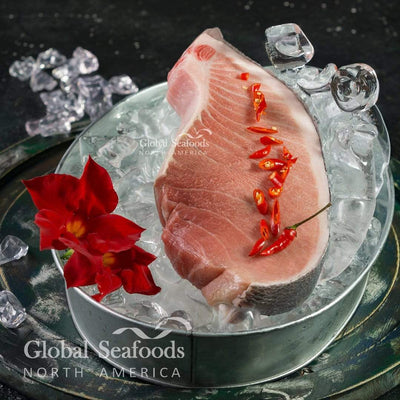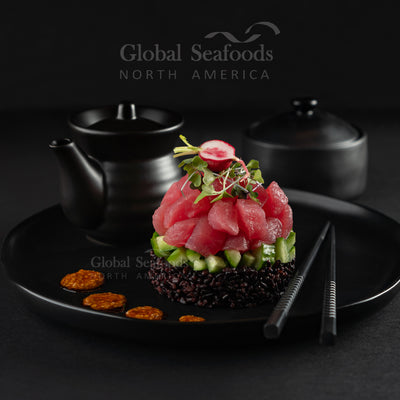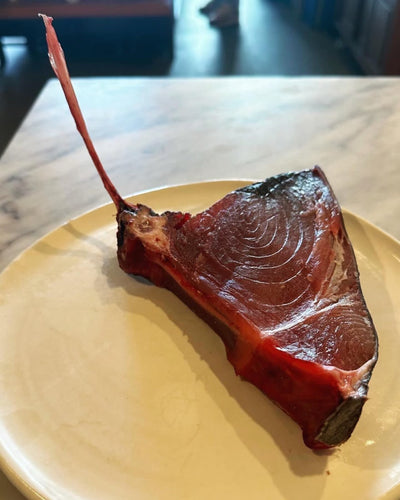Sashimi Tuna: A Complete Guide to This Delicious Seafood Treat

Sashimi Tuna: Culinary Masterpiece
Sashimi tuna is more than just a meal—it's a culinary art form that has captivated seafood enthusiasts around the globe. With its tender texture, delicate flavor, and vibrant appearance, sashimi tuna is the epitome of Japanese cuisine. This guide will take you through everything you need to know about sashimi tuna, including its origins, types, prices, preparation methods, and the rich traditions that surround this beloved dish.
What is Sashimi Tuna? A Brief Overview
Sashimi tuna is a Japanese delicacy that involves serving raw, thinly sliced tuna. The dish is known for its purity, where the freshness and quality of the tuna are paramount. The word "sashimi" itself refers to the method of slicing the fish, and when it comes to tuna, only the finest cuts are used. This dish is cherished for its simple yet profound flavors, where the quality of the tuna shines through with every bite.
Different Types of Tuna for Sashimi
Understanding the different types of tuna used in sashimi is essential for appreciating the nuances of this dish. Here are the primary varieties:
1. Bluefin Tuna (Maguro)
Bluefin tuna is often considered the crown jewel of sashimi-grade fish. Known as Maguro in Japan, this tuna is prized for its rich, buttery texture and deep red flesh. Bluefin tuna is divided into several cuts:
- Akami: The lean, red meat from the sides of the fish, known for its clean, meaty flavor.
- Chutoro: A combination of lean and fatty parts from the belly, offering a balanced flavor and smooth texture.
- Otoro: The most luxurious and fatty part, taken from the belly, known for its marbled appearance and melt-in-your-mouth richness.
Price: Due to its premium quality, Bluefin tuna is the most expensive, with Akami ranging from $30 to $60 per pound, while Otoro can fetch $80 to over $200 per pound, depending on market conditions and quality.
2. Ahi Tuna (Yellowfin Tuna)
Ahi Tuna, also known as Yellowfin Tuna, is a popular choice for sashimi. It offers a slightly milder flavor compared to Bluefin and has a firm, tender texture, making it versatile for various culinary uses.
Price: Ahi tuna is more affordable, typically priced between $15 to $40 per pound, depending on the grade and freshness. This makes it a popular choice for both home cooks and restaurants.
3. Albacore Tuna (Shiro Maguro)
Albacore Tuna, or Shiro Maguro, is characterized by its lighter color and milder flavor. It has a soft, buttery texture, which makes it a favorite among those who prefer a subtler taste in their sashimi.
Price: Albacore tuna is usually more budget-friendly, ranging from $10 to $20 per pound, making it accessible for sashimi enthusiasts of all levels.
How to Select the Best Tuna for Sashimi
Selecting the right grade of tuna is critical for a top-notch sashimi experience. Sushi-grade tuna is the gold standard, ensuring the highest level of freshness and quality. This grade is often flash-frozen right after the catch to preserve the fish's texture and flavor, making it safe for raw consumption.
When purchasing sashimi tuna, always look for fish with vibrant, firm flesh and a clean, oceanic scent. Avoid tuna that appears dull, dry, or emits a strong fishy odor, as these are signs of poor quality. Reputable suppliers like Global Seafoods offer a range of sushi-grade tuna that guarantees both safety and exceptional taste.
Understanding the Tradition of Tuna Sashimi
Tuna sashimi is deeply rooted in Japanese culinary traditions, where it is not merely a dish but a cultural symbol. The tradition of eating raw fish dates back centuries, and tuna, particularly Bluefin, has been revered for its flavor and texture.
Cultural Significance in Japan
In Japan, Maguro (Bluefin tuna) is more than just food; it is a symbol of prosperity and celebration. Its vibrant red flesh is associated with good fortune and is often served during special occasions. The Edo period (1603-1868) was a significant time in Japanese culinary history when the techniques for preserving and preparing raw fish were perfected, leading to the widespread popularity of sashimi.
Today, tuna sashimi is a staple in Japanese dining, often served at the beginning of a meal to highlight its premium status. The presentation of sashimi is an art in itself, where every slice is meticulously arranged to reflect the chef's skill and respect for the ingredients.
The Rituals of Eating Tuna Sashimi
Eating sashimi is a refined experience that involves several cultural rituals. Typically, sashimi is served with soy sauce, wasabi, and pickled ginger (gari). The soy sauce enhances the umami flavor of the tuna, while wasabi adds a sharp contrast. Pickled ginger is consumed between bites to cleanse the palate, ensuring each piece of sashimi is savored fully.
The way sashimi is eaten is also important. Traditionally, a small amount of wasabi is placed directly on the fish, which is then lightly dipped into soy sauce. This method allows the flavors to balance perfectly without overwhelming the delicate taste of the tuna.
Pairing Perfection: How to Enjoy Sashimi Tuna
The right pairings can elevate the flavor of sashimi tuna, making the experience even more enjoyable. While soy sauce and wasabi are the traditional accompaniments, there are other ways to enhance this delicacy.
1. Soy Sauce and Wasabi
Soy sauce, rich in umami, complements the subtle sweetness of sashimi tuna. A light dip is all that's needed to enhance the fish's flavor. Wasabi, with its sharp and fiery profile, adds a kick that balances the tuna's richness.
2. Pickled Ginger (Gari)
Pickled ginger is essential for cleansing the palate between bites. Its tangy, slightly sweet flavor refreshes the taste buds, allowing each piece of sashimi to be appreciated anew.
3. Exploring Alternative Pairings
For those looking to experiment, try pairing sashimi tuna with ponzu sauce, a citrus-based soy sauce that adds a refreshing tang. Yuzu kosho, a paste made from yuzu citrus and chili peppers, provides a bright, spicy contrast to the tuna's flavor. For a touch of luxury, consider using truffle salt or garnishing with shiso leaves to introduce new dimensions to the dish.
FAQs About Sashimi Tuna
Q1: What is the best type of tuna for sashimi?
A: The best types of tuna for sashimi include Bluefin Tuna, Ahi (Yellowfin) Tuna, and Albacore Tuna. Bluefin is prized for its rich, fatty texture, while Ahi offers a slightly milder flavor. Albacore is softer and has a more delicate taste, making it a versatile option for sashimi.
Q2: How can I tell if the tuna is fresh?
A: Fresh tuna should have firm flesh and a vibrant color, ranging from deep red to pink. It should have a clean, oceanic smell with no strong fishy odor. Sushi-grade tuna is often flash-frozen to preserve its freshness and quality.
Q3: Can sashimi tuna be frozen?
A: Yes, sashimi tuna can be frozen, and in fact, it often is. Sushi-grade tuna is typically flash-frozen at extremely low temperatures right after being caught to kill any parasites and maintain its quality. If you freeze sashimi tuna at home, ensure it is wrapped tightly and stored at a consistent, very low temperature.
Q4: Are there any health concerns associated with consuming raw fish?
A: While sashimi tuna is generally safe to eat when properly handled and sourced, there are some risks associated with consuming raw fish, such as exposure to parasites or bacteria. To minimize risks, always purchase sushi-grade tuna from a reputable supplier like Global Seafoods and store it properly. Those with weakened immune systems or pregnant women should consult their doctor before consuming raw fish.
Q5: What are some alternative dipping sauces for sashimi tuna?
A: In addition to soy sauce and wasabi, sashimi tuna pairs well with ponzu sauce (a citrus-infused soy sauce), yuzu kosho (a spicy citrus paste), or truffle salt for a luxurious touch. Experimenting with different sauces can enhance the flavor profile of the tuna.
Conclusion: Dive Into the World of Sashimi Tuna
Sashimi tuna is more than just a dish; it’s an experience—a celebration of the finest elements of Japanese culinary artistry. Its delicate flavor, buttery texture, and vibrant presentation make it a must-try for anyone passionate about seafood. Whether you’re enjoying it in a high-end sushi restaurant or preparing it at home, sashimi tuna offers a gastronomic journey that delights the senses.
With the right grade of tuna, proper preparation, and thoughtful pairings, you can savor this exquisite delicacy to the fullest. So, if you haven’t yet explored the world of sashimi tuna, now is the perfect time to dive in and discover why this dish is revered by seafood lovers around the world.
Also in News

How to Make Sea Bream Sushi With Dry-Aged Tuna & Crab Roll — Step-by-Step With Chef Joshua
A complete guide to making Sea Bream sushi at home, including filleting, curing, slicing, and building a Dry-Aged Tuna & Crab sushi roll. Chef Joshua shares professional tips for restaurant-quality results.

Boiled Crab for Game Night: Everything You Need for a Perfect Seafood Party
Take your game night to the next level with a Boiled crab party. Learn the best recipes, cooking tips, and hosting hacks for a memorable seafood feast.

Boiled Crab for Date Night: A Romantic Guide to the Perfect Seafood Feast
Make your next date night unforgettable with a romantic Boiled crab experience. This guide covers everything you need to know, from ambiance to the best crab varieties.

